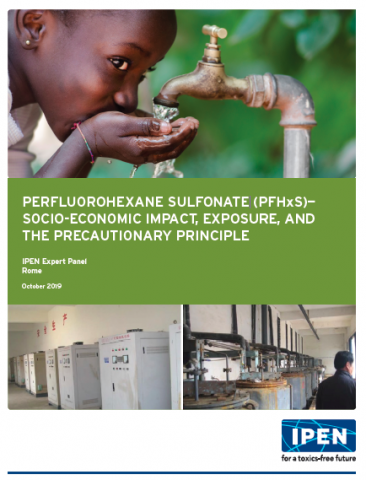New Report: Perfluorohexane Sulfonate (PFHxS)— Socio-Economic Impact, Exposure, and the Precautionary Principle

IPEN presents the third in a series of papers prepared by an international panel of experts on PFAS chemicals. This paper, Perfluorohexane Sulfonate (PFHxS)— Socio-Economic Impact, Exposure, and the Precautionary Principle, offers unique insights about threats to drinking water sources, public health and the occupational health of firefighters due to the particular physico-chemical properties of PFHxS, including its greater mobility, hydrogeological fractionation, and long elimination half-life in people.
The paper presents unequivocal evidence from recent studies that firefighters using aqueous film-forming foams (AFFF) have unacceptably elevated blood levels of both PFHxS and PFOS. It also highlights the inextricable link between PFHxS, PFOS and PFOA resulting from the inherently polluting electrochemical fluorination (ECF) manufacturing process. ECF manufacturing produces a high proportion of unintended PFAS by-products, with profound implications for environmental and human health. The authors examine significant sources of PFHxS/PFAS contamination, including manufacturing, textiles production, firefighting foams, sulfluramid production and use, wastewater and sewage sludge/biosolids. The costs and liabilities associated with continued use of PFHxS and other PFAS are extremely high and warrant a class-based approach to prevent further harm.
